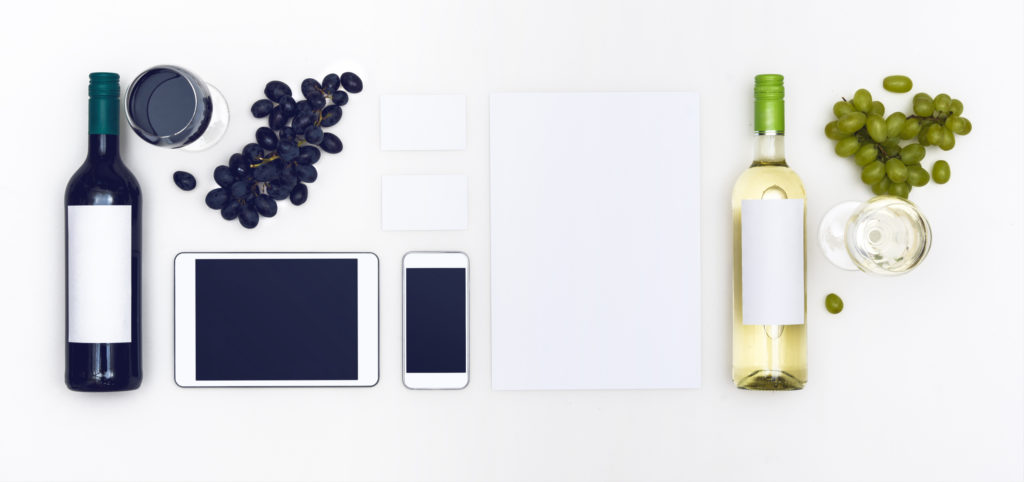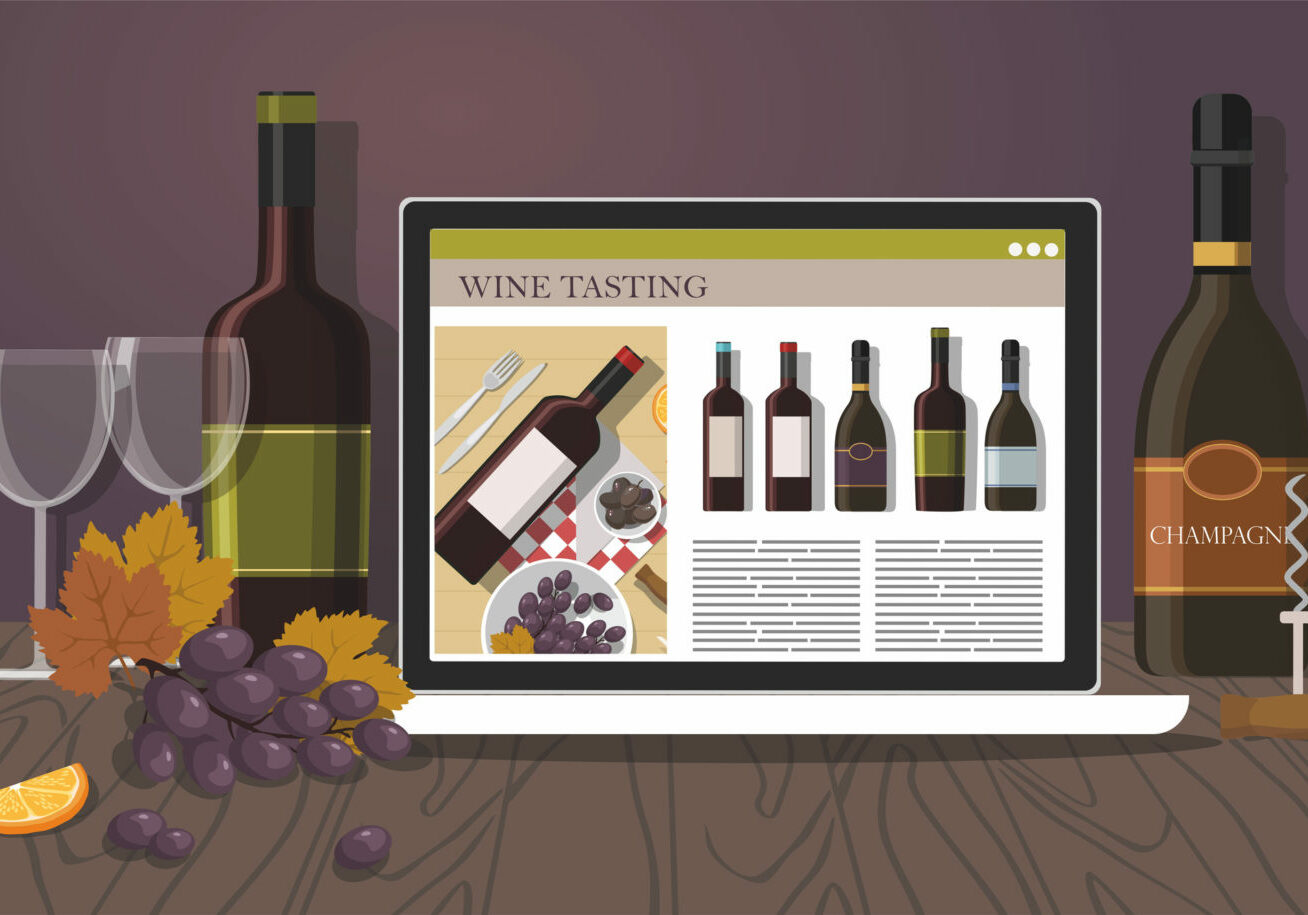Last Updated on June 24, 2021 by
If you want to sell your winery products online, your website needs the attention of your audience. That’s easier said than done. Even well-designed and exceptionally written winery websites that sell exceptional products can still fail if they cannot attract their audience. How do you drive more traffic to your winery website?
That’s probably why, even in an increasingly online world, only 10% of wine sales are online. With a solid strategy to drive traffic to your winery website and convert that traffic into online sales, you can change that trend.
5 Basic Ways to Drive More Traffic to Your Winery Website
Books have been written about the many tactics and approaches to online marketing. What we’ll focus on in this section is a basic overview of the channels most likely to increase your winery website traffic both short- and long-term.
1) Search Engine Optimization
It’s difficult to sum up SEO in a few words, but the best way to do it is this: optimize your entire website so that, when your audience searches for words and phrases related to your wine products online, yours will be among the top search results on Google and other search engines.
That’s easier said than done. It requires months of optimizing your content, code, and everything in-between. A fast-loading website is just as important as high-value content your audience actually wants to read. But it pays off: many marketers consider it to be the most effective long-term traffic driver to your site.
2) Organic Social Media
You likely already have a presence on social media, whether it be a winery page on Facebook or a Twitter/Instagram account. Leveraged the right way, that presence can drive valuable traffic to your site as well.
The key is, paradoxically, to avoid over-promoting your business. Don’t sing your own praises with links to your site. Instead, build that valuable content your audience actually needs on the site, then link to it from social media. That helps you not only grow followers, but encourage these followers to explore your website as well.
3) Comprehensive Email Marketing
Are you collecting customer information in an online database or customer relationship management (CRM) system? If so, leverage the data you have by sending emails that drive back to your site.
Those emails might be promotions of specific products or time-limited/exclusive deals. They might be links to that same relevant content described above. Done right, and when you don’t overdo it, they create a steady flow back to your website from an audience that already knows about and values you.
4) Paid Digital Ads
All the above, if you can pull them off on your own, are entirely free. That’s not the case for digital ads, which are an important but more budget-intensive strategy for quick website hits.
From Google to Facebook, almost every digital platform offers some type of ad solution. These ads typically approximate organic traffic (like sponsored search listings or sponsored Instagram posts), but add a sponsor tag and some additional functionality.
The message can be more promotional. More importantly, though, you’re able to specifically target your audience based on keyword and a large range of demographic parameters. That gets your business, products, and website in front of your target audience even if they’ve never heard about you previously.
5) Offline-Online Connections
Finally, not all traffic-driving tactics have to happen online. In fact, much of what you do at your physical winery and tasting room can translate into online traffic.
Hosting events might require an online sign-up, which automatically drives that traffic. You can collect email addresses for any physical customers, getting them into the flows mentioned above. Where possible, make those offline-online connections to build a more holistic marketing and web traffic strategy.
How to Measure Your Traffic for Smarter Marketing Strategies
A healthy mix of the above five strategies can go a long way towards building your winery website traffic. But that’s only the beginning. Every audience will react differently to different tactics and messages. To know what works, and optimize your digital marketing, you need an analytics strategy.
In other words, you need to measure your web traffic to see what tactics build the most and highest-quality traffic. Tools like Google Analytics become central to this effort. Pay attention to these 6 core metrics:
- Total Visitors. This one’s easy. It measures the total traffic on your site, and is the simplest overview of the attention traffic you’re getting.
- Unique Visitors. A more nuanced version of the above, this metric tracks each user only once. If one person visits your website five times, they’ll add 5 to your total visitor count but only 1 to your unique count. That makes this metric better to understand your true success in gaining audience attention.
- Traffic Source. Where that traffic comes from is a filter in Google Analytics. Here, you can see which of the above tactics actually gets you the visitors, conversions, and best traffic.
- Bounce Rate. What percentage of your visitors leave your website without ever navigating beyond the page they landed on? A high bounce rate tells you about a disconnect; either the tactic you used to drive traffic was misleading, or the content on the landing page just isn’t what your audience is looking for.
- Average Time on Page. It’s an approximation, but still helpful in telling you about the quality of your site traffic. Naturally, someone who stays longer is more interested in what you have to offer.
- Goals/Conversions. They’re called one or the other (Goals in Google Analytics, for instance), but the basic concept is the ability to measure specific actions your audience takes. Someone who visits your site and then fills out a ‘learn more’ form is probably more indicative of success than someone who never takes that conversion step.
There are many more metrics, but these core KPIs help you determine your most effective traffic drivers. That, in turn, allows you to optimize your campaigns over time and pay most attention to those tactics actually driving traffic to your winery website.

Leveraging Winery Website Traffic into Sustainable Customer and Revenue Growth
Of course, gaining that website traffic is an important part of your overall marketing and promotional strategy. But it’s far from the only thing you have to do. Even micro-conversions like the ‘learn more’ action described above still don’t guarantee revenue. Ultimately, the goal of your digital marketing should always be to drive sustainable customer and revenue growth.
To achieve that goal, everything has to work together. You need to have effective tactics to drive web traffic, but also a website and content that converts that traffic into customers. A comprehensive user journey from the first time they hear about you to the time they become a customer needs to be at the core of all of your marketing.
That’s easier said than done, but it’s far from impossible. You might just need help. Contact us for more information about comprehensive, consistent wine marketing designed to drive online sales and grow your winery business.
